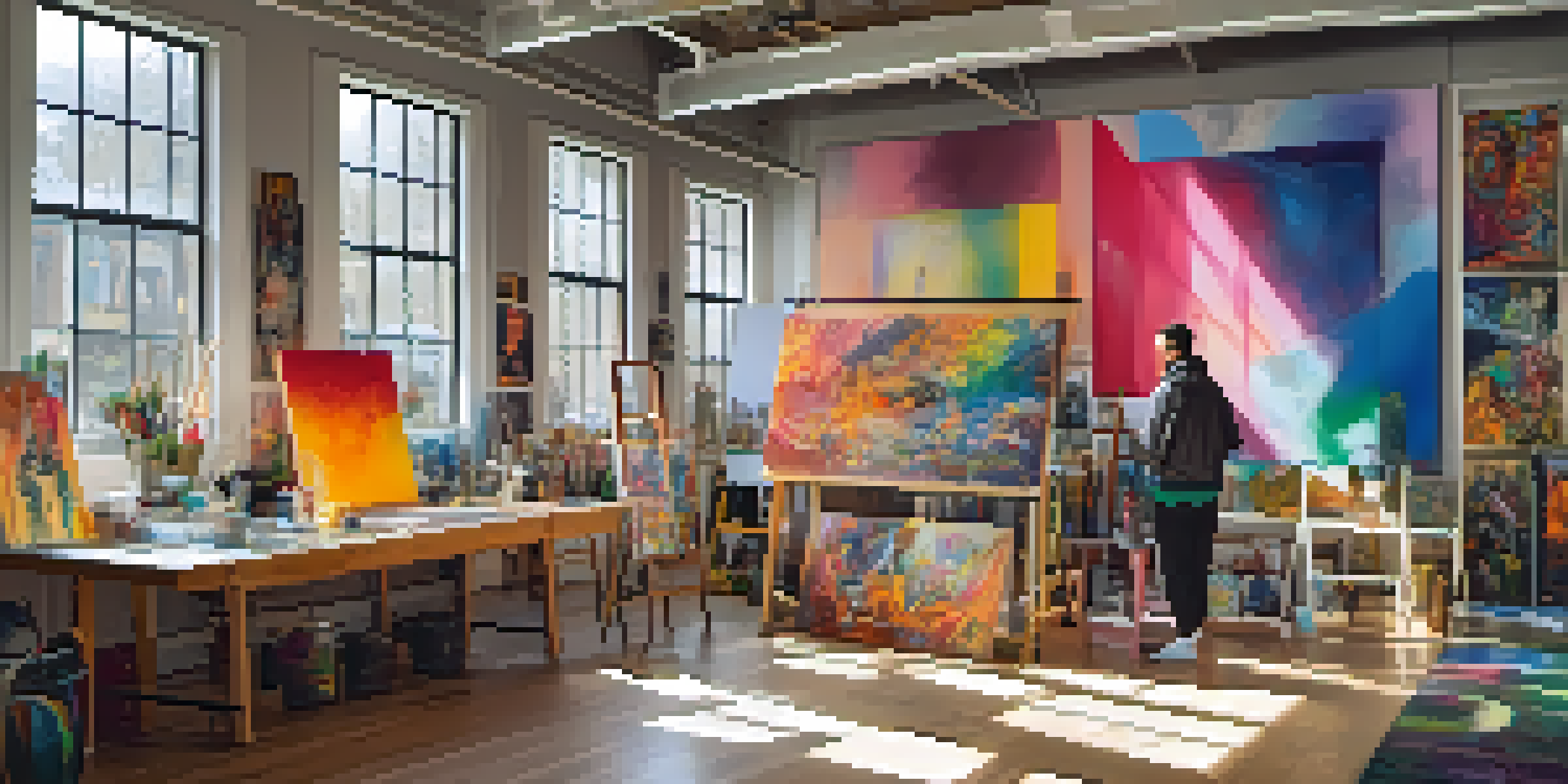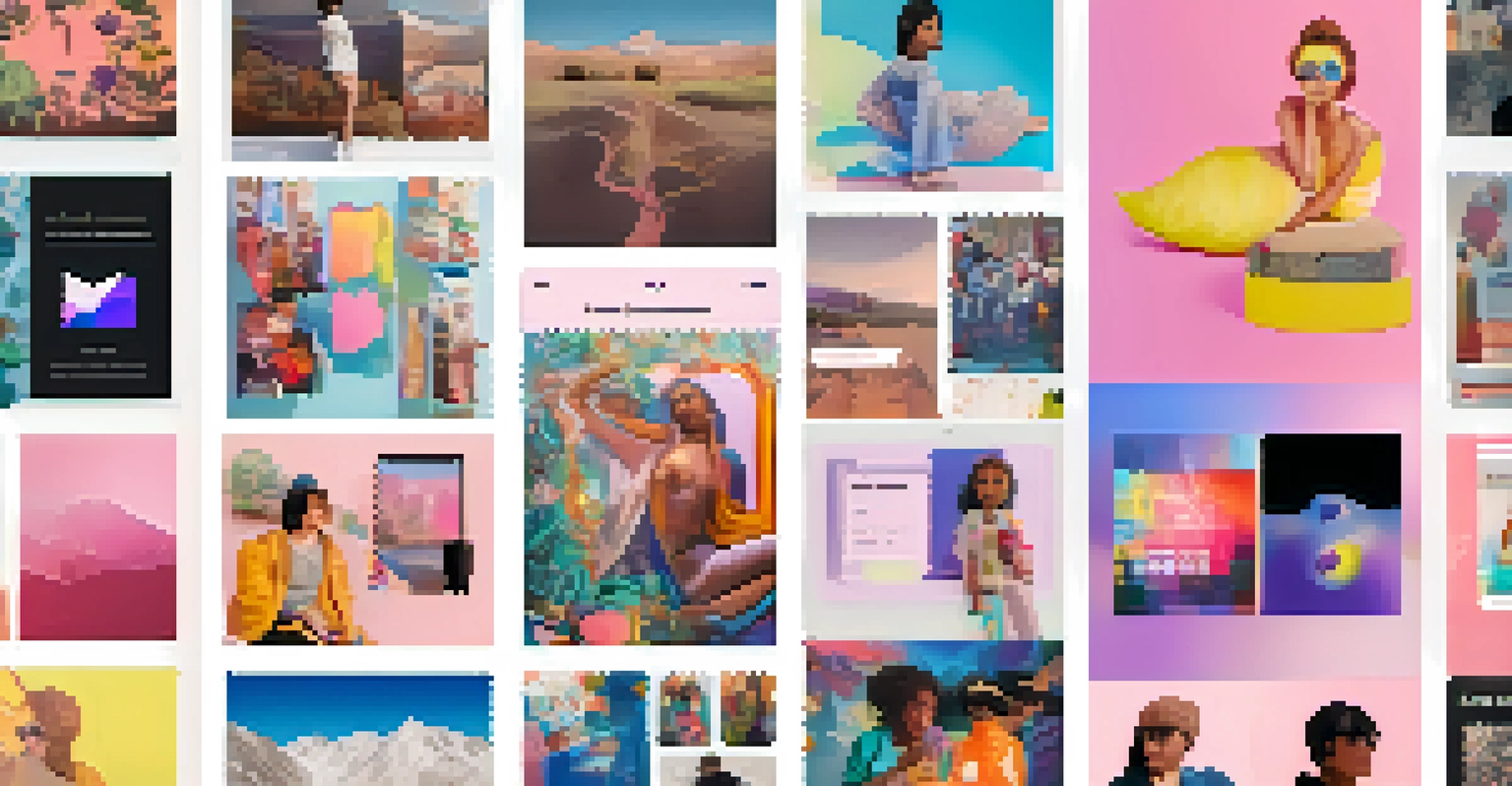Gender and Art: Challenging Stereotypes Through Creative Work

Understanding Gender Stereotypes in Art
Gender stereotypes in art have long dictated who can create and what is worthy of being created. Traditionally, women have been marginalized, often portrayed in narrow roles that reflect societal expectations. This historical bias results in a lack of representation that not only limits female artists but also skews public perception of gender roles.
Art is a reflection of society, and it is through the lens of art that we can challenge and change the narratives around gender.
For instance, the depiction of women as muses rather than creators reinforces the idea that artistry is a male domain. This stereotype can be seen in classical art, where women are often objectified or placed in passive roles. Challenging these perceptions is essential to creating a more inclusive artistic community.
Related Resource
By understanding these stereotypes, we can start to question their validity and relevance in today's society. This awareness lays the groundwork for artists to explore and redefine gender roles through their work, fostering a richer and more diverse artistic landscape.
The Role of Female Artists in Shaping Narratives
Female artists have historically used their work to challenge societal norms and push boundaries. From Frida Kahlo's exploration of identity and pain to Yayoi Kusama’s immersive installations, these artists have utilized their unique perspectives to tell stories that resonate deeply with audiences. Their creativity not only reflects personal experiences but also speaks to broader themes of gender and identity.

These artists often tackle issues such as body image, sexuality, and feminism, providing commentary on the female experience. For example, the work of Cindy Sherman questions the nature of female identity by presenting herself in various roles and personas. By doing so, she invites viewers to reflect on the constructed nature of gender roles.
Gender Stereotypes Shape Art
Gender stereotypes in art marginalize female artists and influence societal perceptions of gender roles.
The impact of these narratives is profound, as they inspire new generations of artists and challenge existing norms. As more female voices emerge, the art world can begin to reflect the complexities of gender in a more authentic and multifaceted way.
Male Artists Challenging Gender Norms
While much attention is given to female artists, male artists are also essential in challenging gender stereotypes. Many male creators are using their platforms to question traditional masculinity and its societal implications. This can be seen in the work of artists like David Hockney, who explores themes of love and vulnerability in a way that defies conventional male portrayals.
The role of the artist is to make the revolution irresistible.
By addressing topics often deemed 'feminine,' such as emotional expression and intimacy, male artists help to break down barriers that limit all genders. This kind of vulnerability opens up a dialogue about what it means to be a man in today's world, encouraging others to embrace authenticity over societal expectations.
Related Resource
This collaboration between genders in the art world fosters an environment where everyone can express themselves freely. It’s a powerful reminder that confronting stereotypes is a collective effort, and each artist can play a role in reshaping perceptions.
Art as a Platform for Social Change
Art has the unique ability to spark conversations and inspire change. Many artists use their work as a platform to address issues related to gender equality, from advocating for women's rights to challenging toxic masculinity. This social engagement not only raises awareness but also mobilizes communities around important causes.
For example, the Guerrilla Girls, an anonymous group of feminist artists, have utilized provocative posters and performances to highlight gender disparities in the art world. Their bold approach has brought attention to the need for greater representation of women and marginalized groups in galleries and museums.
Intersectionality Enriches Art
Understanding intersectionality allows for a broader dialogue around gender, reflecting the complexities of identity in artistic expression.
By leveraging art for advocacy, creators can reach wider audiences and foster empathy. This connection can result in a more informed and engaged public, ultimately leading to meaningful social change and a shift in how gender is perceived.
Intersectionality in Gender and Art
Intersectionality recognizes that individuals experience overlapping forms of discrimination based on various identities, including race, gender, and class. In the art world, this concept is crucial for understanding how different identities shape artistic expression and reception. Artists like Kara Walker and Ai Weiwei exemplify how intersectional perspectives can lead to powerful commentary on social issues.
By acknowledging the complexities of identity, artists can create work that resonates with a broader audience. This inclusion allows for a richer dialogue around gender, as it emphasizes that experiences are not monolithic. Understanding intersectionality helps to dismantle stereotypes that fail to consider the multifaceted nature of identity.
Related Resource
The incorporation of diverse voices into the art narrative enriches our understanding of gender dynamics. As artists from various backgrounds share their experiences, they contribute to a more nuanced and expansive view of gender and art.
The Impact of Technology on Gender Representation in Art
Technology has transformed how art is created and consumed, providing new avenues for challenging stereotypes. Digital platforms enable artists to reach global audiences, allowing for diverse expressions of gender and identity to flourish. Social media, in particular, has become a powerful tool for artists to share their work and connect with like-minded individuals.
For instance, many female and non-binary artists have gained visibility through platforms like Instagram, where they can redefine traditional art narratives. This democratization of art not only broadens representation but also fosters a sense of community among marginalized artists.
Technology Empowers Diverse Voices
Digital platforms provide new opportunities for underrepresented artists to challenge stereotypes and connect with global audiences.
As technology continues to evolve, it presents both challenges and opportunities for gender representation in art. It’s essential for artists to navigate this landscape thoughtfully, ensuring that the dialogue around gender remains inclusive and dynamic.
Future Directions: Embracing Diverse Voices in Art
Looking ahead, the art world must continue to embrace diverse voices that challenge existing stereotypes. This shift requires intentional efforts to amplify underrepresented artists and create spaces where all forms of expression are valued. By prioritizing diversity, we can build a more equitable art community that reflects the complexities of modern society.
Institutions and galleries have a pivotal role in this movement, as they can curate exhibitions that spotlight marginalized artists and foster discussions around gender. Collaborations between artists of different backgrounds can also lead to innovative works that challenge norms and provoke thought.

Ultimately, the future of art lies in its ability to adapt and respond to societal changes. By embracing diverse perspectives, we can create a vibrant artistic landscape that not only challenges stereotypes but also inspires future generations to think critically about gender and identity.